A few of us in year 4 were selected to do Extension Literacy. Although I knew this meant extra work for my weekends, I was excited because I was finally able to use Edmodo, which is like Facebook but for students and teachers. I had seen my big sister Eve using Edmodo last year and I thought it looked pretty cool.
Below you will see my “Asia and Australia” assignment and some parts were really hard! The bit I really liked was discovering how to use Google Maps. You can create your own personal map with pins on different places. Google calls this “My Places”. It’s super cool and I have made lots of different maps.
Wikipedia says:GOOGLE MY MAPS
My Maps lets users and businesses create their own map by positioning markers, polylines and polygons onto a map. The interface is a straightforward overlay on the map.
Maps modified using My Maps can be saved for later viewing and made public or marked as unlisted, in which case a user will need the saved URL with a 42 character unique ID.
Each element added to a My Map has an editable tag. This tag can contain text, rich text or HTML. Embeddable video and other content can be included within the HTML tag.
For example I made a “Holiday Map” so I can remember all the places I have visited on my family holidays. Of course I can zoom in and out and see which cities I have visited.
It was fun finding all the different countries I have visited and putting pins on it. Finding the cities is pretty easy.
Mum said she was impressed as she didn’t know Google Maps did this. She said she will plan our next holiday by creating a “My Place”.
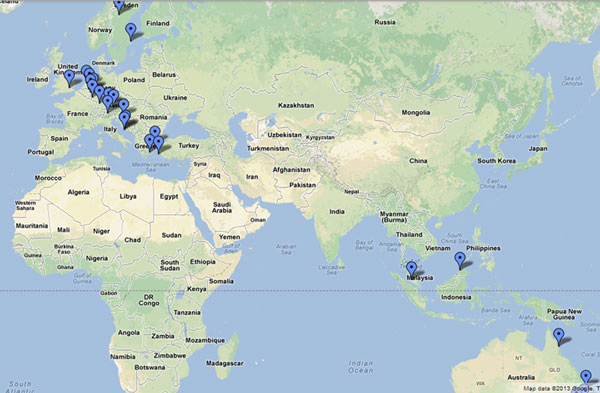
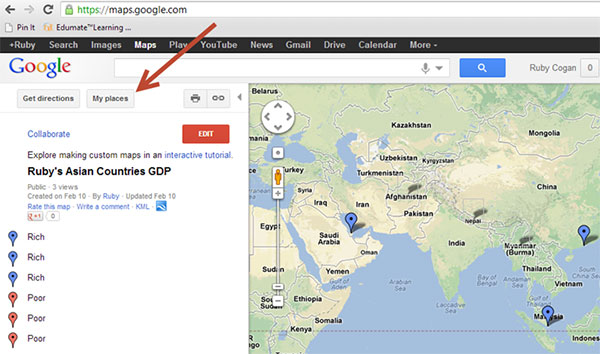
Below is my assignment on “Australia and Asia”. I got 28/30. I hope you like it.
Easy Peasy Lemon Squeezy
Ruby
– – Australia and Asia Assignment – –
PART ONE
Asia is changing
Asia is changing. It used to be old fashioned and poor and now they are advanced and everything you buy is “Made in China”. Now they are getting wealthier and have all the latest electronics, the latest software and many new buildings. When I was on holidays in Bali I saw that they had Chipmunks 3 already on DVD (Alvin and the Chipmunks: Chipwrecked). When I came back to Australia, it was not even out in the cinemas and I had to wait one month. This is one example that they are in front of us, not behind us.
Asia’s changes are impacting Australia
Since Asia is growing into a wealthy continent, it will impact Australia because we will want to trade more with them. Since they have more money to spend, Australians will want to build products that Asians will want to buy. That means that we will spend more time communicating and doing business with Asian countries than we have in the past.
Australian children should learn more about Asia
It is important for Australia’s children to learn about Asia, its people and their cultures. Firstly Asia is the closest continent to us, they are our neighbours and they will have more money to spend as the years go on. Also their population is bigger, so they have more people to buy products from Australian businesses.
This is very different from my parents when they were growing up, Australia concentrated on Great Britain and America.
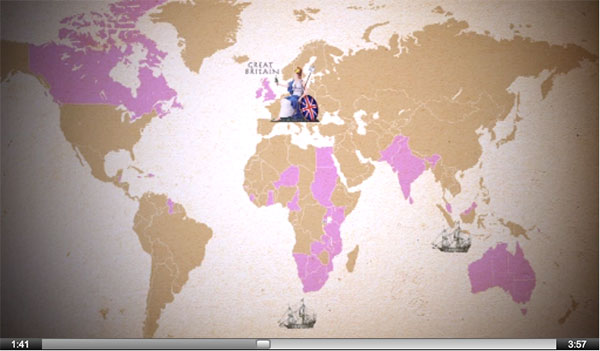
PART TWO
Definition of GDP
GDP stands for “Gross Domestic Product”. This is the total of the country’s business, which can be products or services. Large countries like United States, China and Japan have the highest GDP.
GDP per capita is the measure of a country’s wealth, divided by the population of that country. This gives an average of wealth. Luxembourg, Qatar and Norway have the highest GDP per capita.
http://en.wikipedia.org/wiki/Gross_domestic_product
http://easynomics.com/easy-intro-pages/easy-intro-to-gdp-gross-domestic-product/
The rich and poor Asian nations
The wealthiest Asian countries per capita are:
- Qatar
- Macau
- Singapore
The poorest Asian countries per capita are:
- Afghanistan
- Burma
- Nepal
This is from the “List of Asian Countries by GDP”. It was produced by the “International Monetary Fund”, using 2010 data.
Update for 2011: There are many organisations that measure GDP per capita and they each have slightly different results. The four main organisations are:
- World Bank
- International Monetary Fund
- Central Intelligence Agency
- University of Pennsylvania
Using these organisations and 2011 data, the three wealthiest countries in Asia are:
| Ranking | World Bank | International Monetary Fund | Central Intelligence Agency | University of Pennsylvania |
| 1 | Qatar | Qatar | Qatar | Qatar |
| 2 | Macau | Singapore | Singapore | United Arab Emirates |
| 3 | Singapore | Brunei | Brunei | Brunei |
Using these organisations and 2011 data, the three poorest countries in Asia are:
| Ranking | World Bank | International Monetary Fund | Central Intelligence Agency | University of Pennsylvania |
| 1 | Afghanistan | Afghanistan | Afghanistan | Afghanistan |
| 2 | Nepal | Nepal | Nepal | East Timor |
| 3 | Bangladesh | Burma | Burma | Nepal |
I have made a map that shows the three richest and the three poorest countries in Asia. The rich ones are small islands and the ones that are poor are big countries.
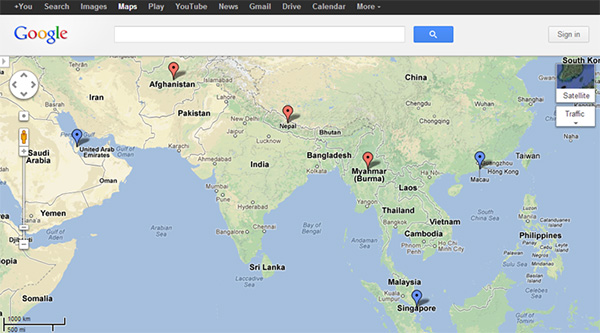
Australia’s GDP per capita
In 2012 Australia’s GDP was US $39,466 per capita.
As you can see on the graph, Australia’s GDP per capita has been going up since 2004, except for 2011 when it went down, but 2012 brought it up again.
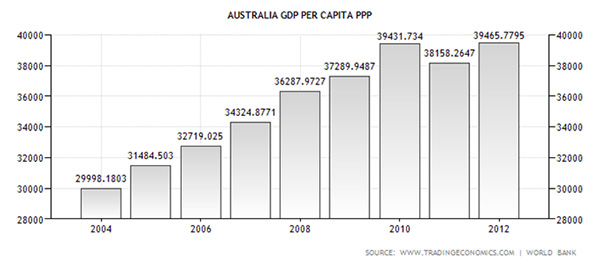
Thank you
Ruby Cogan
Year 4 – Ms Thompson and Mrs Holden


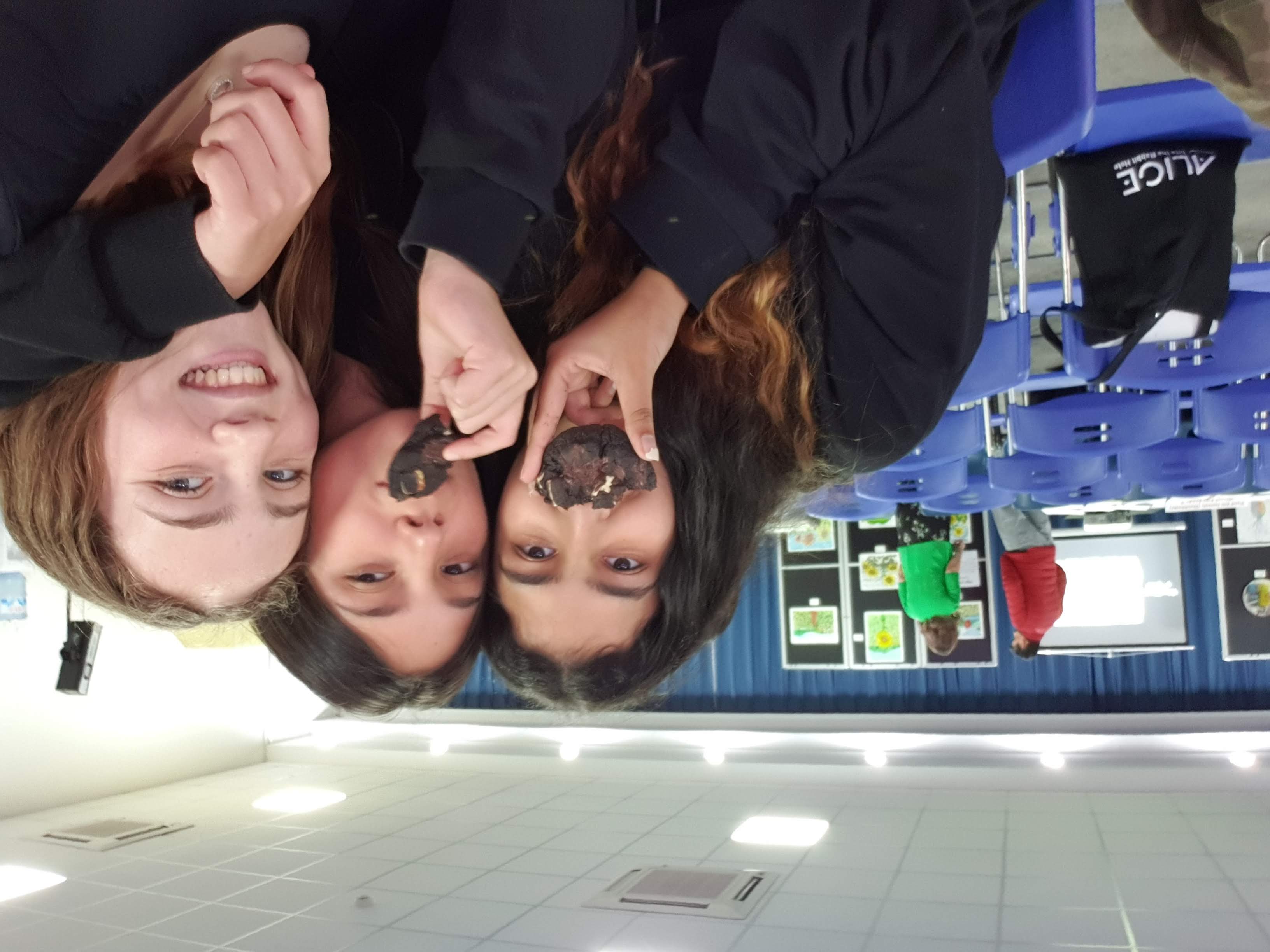
[…] ← Previous […]